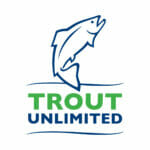Seed Savers Exchange stewards America’s culturally diverse and endangered garden and food crop legacy for present and future generations. They educate and connect people through collecting, regenerating, and sharing heirloom seeds, plants, and stories.
Seed Savers Exchange has been saving and sharing seeds with gardeners since 1975.
To commemorate the Seed Savers Exchange network—and all that it has accomplished since 1975—SSE will host a celebration and in-person conference on August 8-9, 2025, at its Heritage Farm headquarters outside Decorah, Iowa. The event will feature speakers, farm and garden tours, workshops, demonstrations, seed swaps, and live music.

What does Seed Savers Exchange have to do with trout? Well, SSE has a trout stream flowing through their property, and this stream holds the South Pine strain of Brook trout that is unique to Iowa. Cameron Aker, with TUDARE, will be giving stream walks throughout the event to showcase how Iowa DNR, Trout Unlimited, and other partners are working together to preserve, protect, and expand the range of this Iowa specific Brook trout strain.
Their featured sessions are being finalized, and descriptions will be added and updated as information is confirmed. Subscribe to Seed Savers Exchange event emails to stay up to date on all 50th anniversary event news.
Find out more…



